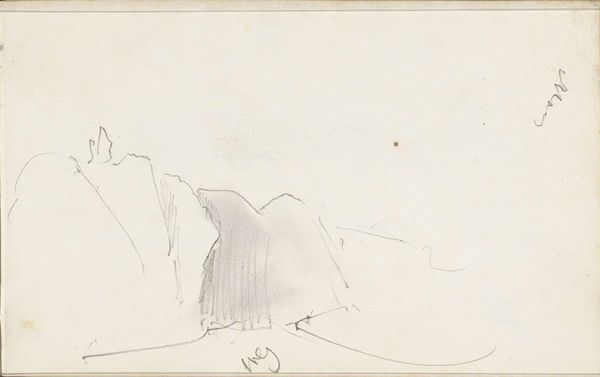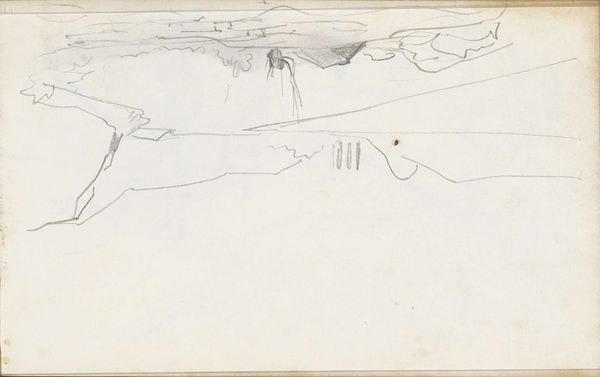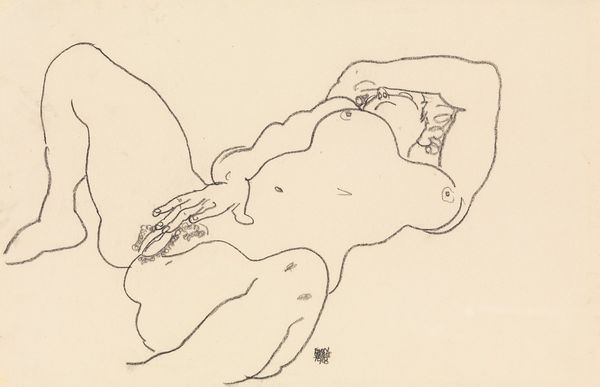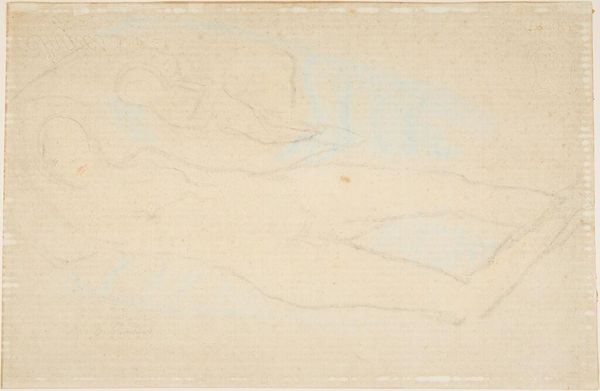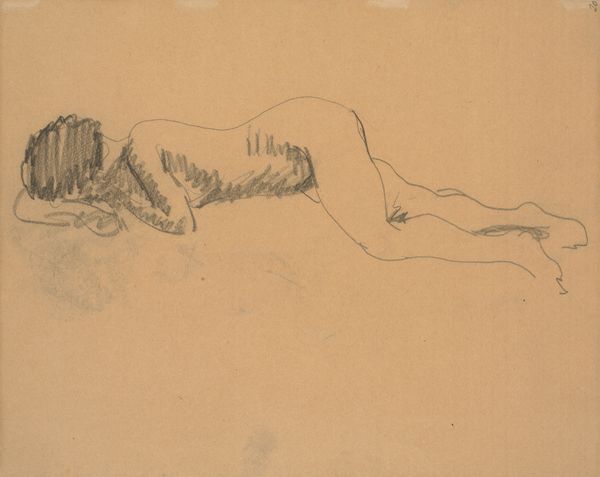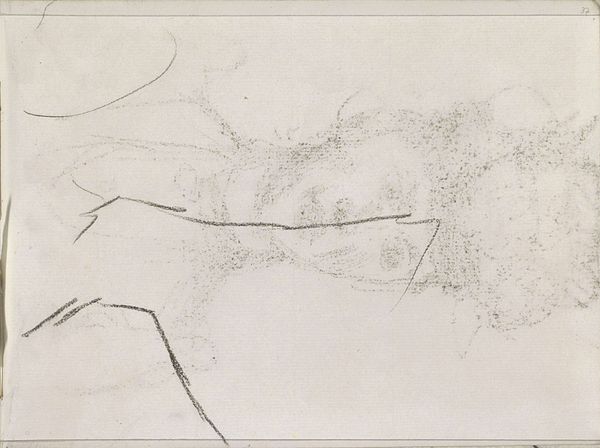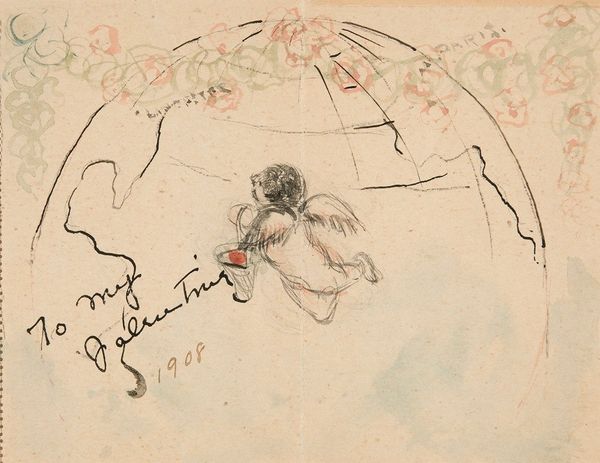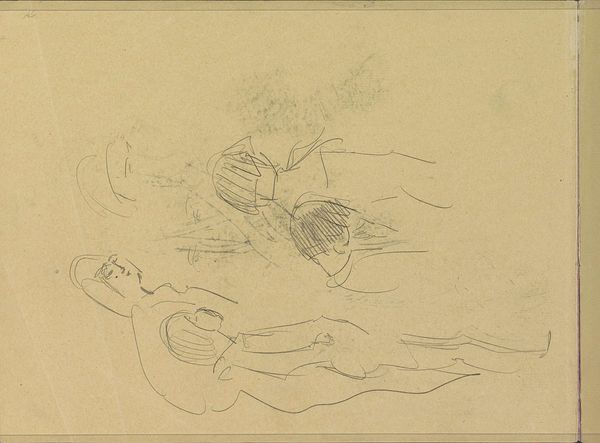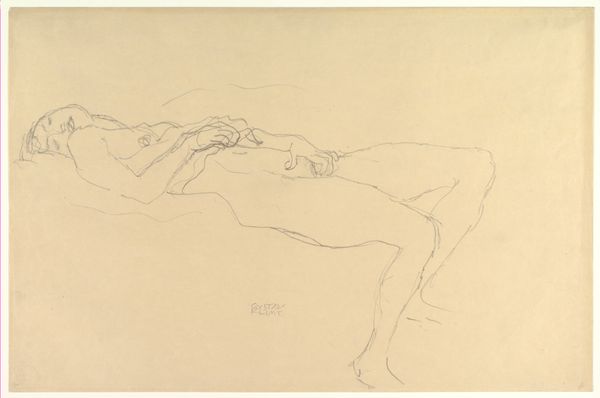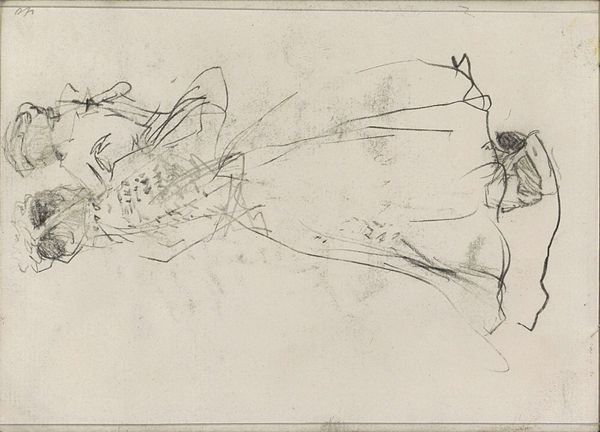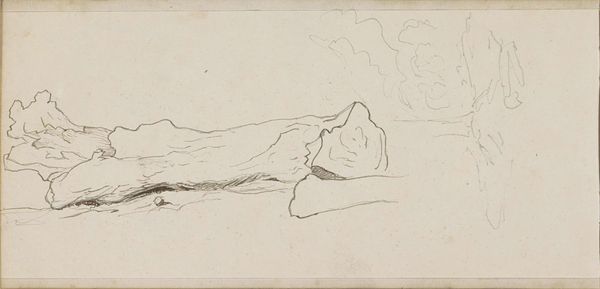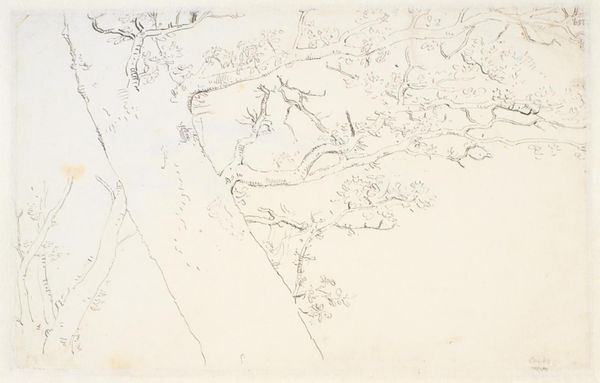
#
amateur sketch
#
light pencil work
#
pencil sketch
#
incomplete sketchy
#
charcoal drawing
#
possibly oil pastel
#
female-nude
#
pencil drawing
#
underpainting
#
portrait drawing
#
watercolor
Dimensions: 37 x 56 cm
Copyright: Public domain
Editor: Here we have Gustav Klimt's "Reclining Nude Lying on Her Stomach and Facing Right," created around 1910. It looks like pencil on paper. I'm immediately drawn to the contrast between the detailed face and the almost frantic, swirling lines depicting the drapery. What stands out to you in this work? Curator: I'm struck by how this piece reveals the labor embedded in artistic creation, it foregrounds process. Notice the visible underdrawing, the pentimenti—these are the material traces of Klimt grappling with the subject. It exposes the labor, challenges traditional notions of effortless artistic genius. What does that unfinished quality communicate to you? Editor: It makes it feel really immediate and intimate, like we’re seeing him work through the problems of the pose in real-time. Is this kind of "behind the scenes" look typical of Klimt? Curator: While Klimt is known for his highly finished, opulent paintings, this drawing allows us to consider the material conditions and the physical act behind them. He often made preparatory sketches, many surviving in the hundreds, revealing a studio practice heavily reliant on drawing. What does that production method say about art creation at that time? Editor: That artistic creation wasn't this purely 'intellectual' exercise but also physically demanding work! So considering this was a study, are there social factors informing this choice of subject too? Like, who was employing Klimt, and how might their expectations shape this? Curator: Exactly. Think about the rising bourgeois class, who commissioned portraits and decorative works. Klimt both catered to their desires for beauty and explored new representations of the female form, but in a way that remained tethered to consumer desires. This duality speaks to the complex relationship between artist, patron, and society, mediated by the materials themselves. Editor: This definitely makes me see the drawing as less of a spontaneous sketch and more as part of a larger, commercially driven art world. It is amazing what we can deduct from its unfinished form! Curator: Indeed! Examining the material processes helps us unravel the intricate connections between artistic production, social context, and even the economic realities of Klimt's time.
Comments
No comments
Be the first to comment and join the conversation on the ultimate creative platform.
